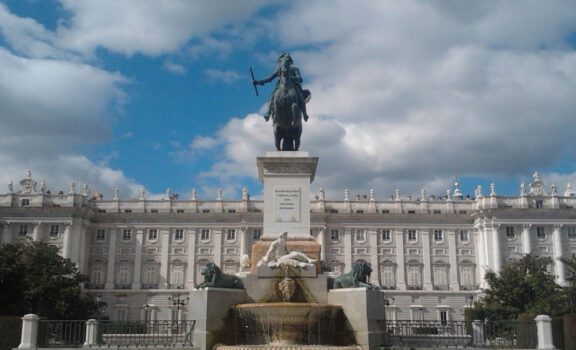Philip IV of Spain: The Monarch Behind Courtly Intrigue and Scandal
Philip IV of Spain, also known as Felipe el Grande (Philip the Great), ruled during one of the most turbulent periods in Spanish history. Born on April 8, 1605, Philip was the son of King Philip III of Spain and Margaret of Austria. Ascending to the throne in 1621 at just sixteen years old, he inherited a kingdom at the height of its imperial power, yet fraught with political, military, and financial crises. His reign lasted almost four decades, until his death in 1665, and it was marked by grand achievements, cultural flourishing, scandals, and mysteries that still captivate historians today.
Philip IV grew up in the grandeur of the Spanish court, immersed in the complexities of Habsburg politics. His father, Philip III, had relied heavily on his favorite, the Duke of Lerma, to govern Spain, leaving the young prince relatively inexperienced in the art of ruling. Philip IV, however, demonstrated early on a keen interest in politics, military affairs, and the arts. His ascension in 1621 came at a time when Spain was engaged in the Thirty Years’ War (1618–1648), a conflict that drained the royal coffers and tested the limits of Habsburg power in Europe.
Philip IV and the Arts: A King of Cultural Splendor

Philip IV of Spain Portrait
One of Philip IV’s most celebrated legacies is his patronage of the arts. Unlike many of his contemporaries, he had a genuine passion for painting, theater, and literature. Under his reign, the Spanish Golden Age (Siglo de Oro) reached new heights. Philip IV was an avid collector of artworks and a devoted supporter of the famous painter Diego Velázquez, who became his court painter and close confidant. Velázquez’s masterpieces, including the iconic Las Meninas, immortalized Philip IV’s court and gave the world a glimpse of the opulence and complexity of Spanish aristocracy.
Philip IV’s court was also a hub for writers and playwrights, including Calderón de la Barca, whose works reflected the intricate interplay of religion, honor, and politics that defined 17th-century Spain. Through his patronage, Philip IV cultivated a lasting cultural legacy, portraying himself as a monarch of taste, refinement, and sophistication.
Philip IV’s Political Issue and Controversies
Despite his cultural accomplishments, Philip IV’s reign was deeply controversial. Historians often criticize him for his reliance on court favorites, particularly the Count-Duke of Olivares, who effectively served as Spain’s prime minister. Olivares wielded enormous influence, shaping both domestic policy and foreign affairs. Under Olivares’ guidance, Spain attempted ambitious reforms, including centralizing royal authority and managing an overstretched empire. However, these efforts often backfired, leading to internal revolts and military failures.
One of the most notorious controversies was Philip IV’s handling of the Catalan Revolt (1640–1652) and the Portuguese Restoration War (1640–1668). His inability to maintain control over these regions damaged Spain’s territorial integrity and prestige. Critics argue that Philip’s excessive trust in Olivares and his tendency to avoid personal confrontation in governance contributed to these crises.
Scandals and the Mystery of Philip IV
Philip IV’s personal life was also fraught with scandal and intrigue, adding to his controversial image. One of the most discussed aspects of his reign is his complex marital and familial relationships. In 1621, he married Elisabeth of France, a politically strategic union intended to strengthen ties between Spain and France. Their marriage produced multiple children, but it was also marked by infidelity on both sides. Philip IV was rumored to have numerous mistresses, many of whom wielded considerable influence over the court.
Perhaps the most intriguing and scandalous rumor concerns the question of whether Philip IV married his niece. Historical records suggest that his second marriage was to Mariana of Austria, his niece, in 1649. This union was typical of Habsburg dynastic strategies, designed to consolidate power and preserve royal bloodlines. The marriage produced several children, including Charles II, whose frail health and later infertility would have profound implications for the Spanish monarchy. The controversial nature of marrying a close relative sparked both moral and political debates, highlighting the tension between dynastic ambition and ethical considerations in European royal courts.
Another layer of mystery surrounds Philip IV’s private life. His intense interest in the arts and obsession with appearances sometimes masked the realities of his governance. Some historians argue that Philip IV’s focus on courtly culture and ceremonial grandeur came at the expense of practical leadership. This perception, combined with rumors of secret liaisons and political intrigue, has fueled speculation and scandal around his reign.
Philip IV’s Achievements and Failures
Philip IV’s reign is a complex tapestry of achievements and failures, reflecting the challenges of ruling an empire in decline.
Achievements:
Cultural Patronage: Philip IV transformed Spain into a European cultural hub, supporting painters, writers, and musicians. The works of Velázquez and Calderón de la Barca remain cornerstones of Spanish art and literature.
Dynastic Strategy: His marriage alliances, despite their controversial nature, aimed to secure Spain’s position in Europe and maintain Habsburg influence.
Religious Support: Philip IV remained a devout Catholic, reinforcing the Counter-Reformation’s principles and supporting the Church’s influence across his territories.
Military Efforts: Despite mixed results, Philip IV personally oversaw military campaigns and sought to protect Spain’s empire, demonstrating commitment to his role as a sovereign ruler.
Failures:
Economic Decline: Philip IV’s reign saw a significant deterioration of Spain’s economy, exacerbated by war expenses, inflation, and mismanagement.
Territorial Losses: The loss of Portugal in 1640 and the challenges of suppressing Catalonia’s revolt revealed weaknesses in his rule.
Reliance on Favorites: Overdependence on Olivares and other court figures often undermined effective governance, contributing to corruption and political instability.
Dynastic Fragility: His decisions regarding marriage and inheritance contributed to the eventual succession crisis and the decline of the Spanish Habsburg line.
Philip IV is often depicted as a paradoxical figure, a man of grandeur, culture, and charm, yet also vulnerable, indecisive, and prone to personal indulgence. Contemporary accounts describe him as intelligent and politically aware but easily swayed by advisors and courtiers. His fascination with the arts and courtly pageantry sometimes overshadowed the harsh realities of ruling a sprawling empire in crisis.
Yet, it would be unfair to reduce Philip IV to mere weaknesses. His genuine interest in culture, diplomacy, and dynastic continuity reflects the complexities of a monarch navigating an era of profound political and social transformation.
Philip IV Legacy in History
Philip IV’s legacy is a blend of cultural brilliance, political controversy, and personal intrigue. He presided over a kingdom that, while still vast and powerful, faced growing internal and external pressures. His reign symbolizes the challenges of Habsburg Spain in the 17th century, an empire struggling to balance grandeur with governance, ambition with practicality.
Historians continue to debate Philip IV’s effectiveness as a ruler. Some emphasize his failures in military and economic matters, while others highlight his contributions to art, literature, and dynastic stability. The mysteries surrounding his personal life, especially his marriages, alleged infidelities, and close familial unions, add layers of fascination and controversy, making him one of the most enigmatic monarchs of early modern Europe.
The Scandal and Mystery Summarized
The most enduring scandals of Philip IV’s reign include:
Marriage to Mariana of Austria: Marrying his niece was both a dynastic necessity and a source of controversy, highlighting the morally complex practices of European royal families.
Courtly Intrigues: Philip IV’s reliance on favorites and mistresses fueled rumors and political conspiracies, creating an atmosphere of suspicion at court.
Military and Territorial Failures: Losing control over Portugal and facing revolts in Catalonia challenged his authority and tarnished his reputation.
Personal Mysteries: His private life, characterized by rumored affairs and an obsession with ceremonial splendor, has long intrigued historians and the public alike.
Philip IV of Spain remains a figure of contradiction, a monarch of great taste and artistic sensibility, yet also a ruler beset by scandal, controversy, and political challenges. His life exemplifies the tensions inherent in European monarchy: the desire for cultural glory and dynastic continuity, set against the harsh realities of governance and empire.
Philip IV’s Reign controversies, scandals, achievements (1621–1665)
1605 – Birth
Philip IV is born on April 8, 1605, in Valladolid, Spain, the son of King Philip III and Margaret of Austria.
1621 – Accession to the Throne
At age sixteen, Philip IV ascends the throne after the death of his father.
Ends the influence of the Duke of Lerma (his father’s chief minister), transferring power to Gaspar de Guzmán, the Count-Duke of Olivares.
1621–1625 – Early Reforms and War Efforts
Olivares begins centralizing reforms to strengthen royal authority and curb corruption.
Spain re-engages in the Thirty Years’ War, attempting to reassert dominance in Europe.
1625: Spanish forces capture Breda, celebrated in Velázquez’s painting The Surrender of Breda.
1627–1629 – Economic Strains and Military Pressure
Severe inflation and bankruptcy trouble Spain’s finances.
Military engagements drain resources, and discontent begins to simmer in the provinces.
1630s – Peak of Olivares’ Influence
Olivares pushes for greater centralization, provoking resistance in Catalonia and Portugal.
1635: France formally enters the Thirty Years’ War against Spain, escalating conflict.
1639: Spain suffers a major naval defeat at the Battle of the Downs.
1640 – Revolts and the Breaking Point
Catalonia rises in open revolt (Reapers’ War), sparked by unpopular taxation and conscription.
Portugal declares independence from Spain under the Duke of Braganza, beginning the Portuguese Restoration War.
Philip IV’s empire shows cracks as his control weakens.
1643 – Military Defeat and Decline
Spain suffers a crushing defeat at the Battle of Rocroi against the French. This marks the decline of Spanish military dominance in Europe.
Philip IV dismisses Olivares from power after mounting failures and unpopularity.
1644–1648 – Attempts at Recovery
Despite setbacks, Philip IV continues the war effort and works to restore stability.
1648: The Peace of Westphalia ends the Thirty Years’ War. Spain formally recognizes Dutch independence, signaling the loss of one of its wealthiest territories.
1649 – Controversial Marriage to Mariana of Austria
After the death of his first wife, Elisabeth of France, Philip IV marries his niece, Mariana of Austria.
The union is controversial but intended to preserve Habsburg bloodlines.
This marriage produces Charles II, whose frail health later leads to dynastic crisis.
1650s – Struggles at Home and Abroad
Spain continues to lose ground to France and Portugal in ongoing wars.
Economic hardship deepens, with widespread famine, plague, and population decline.
Despite hardships, Philip IV maintains lavish artistic patronage, commissioning Velázquez’s masterpieces including Las Meninas (1656).
1659 – Treaty of the Pyrenees
Spain signs the Treaty of the Pyrenees with France, ending two decades of war.
Spain cedes territories (including parts of Catalonia and Artois) to France, marking a clear decline in its European dominance.
As part of the treaty, Philip’s daughter Maria Theresa marries Louis XIV of France, cementing a new Franco-Spanish alliance but planting seeds for future Bourbon succession in Spain.
1660s – Final Years of Reign
Philip IV grows increasingly weary and withdrawn, haunted by personal losses, economic collapse, and political failures.
His heir, Charles II, is weak and sickly, raising fears of dynastic extinction.
Despite setbacks, Philip continues to support the arts and religious institutions.
1665 – Death
Philip IV dies on September 17, 1665, at the age of sixty.
His young son Charles II inherits the throne, marking the beginning of Spain’s final Habsburg monarch.
Timeline Highlights
Cultural Patronage: Throughout his reign, Philip IV supports the arts, commissioning works from Velázquez, Zurbarán, and other great masters.
Scandals: His marriage to his niece Mariana of Austria and rumored affairs add to his controversial reputation.
Military Decline: From the loss at Rocroi (1643) to the Treaty of the Pyrenees (1659), Spain steadily loses its dominance in Europe.
Dynastic Legacy: Despite his efforts, Philip IV’s policies and marriages fail to secure long-term Habsburg stability, leading to the War of Spanish Succession after Charles II’s death.
Philip IV’s story is not simply one of success or failure; it is a narrative of complexity, human ambition, and the delicate balance between public duty and private desire. While he may have faltered in certain political and military endeavors, his patronage of the arts, strategic dynastic marriages, and enduring cultural legacy secure his place in history as one of Spain’s most fascinating and multifaceted monarchs.




